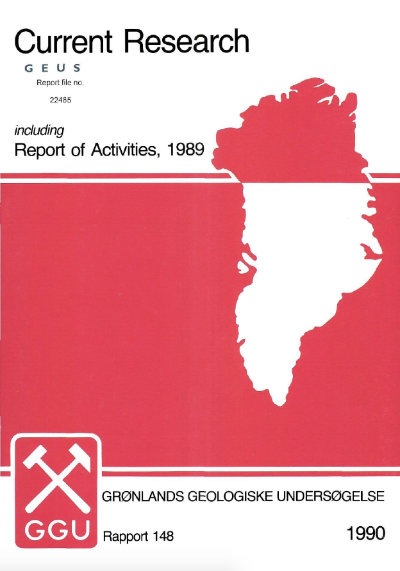Volcanic marker horizons in the Maligât Formation on Disko and Nûgssuaq, and implications for the development of the southern part of the West Greenland basin in the early Tertiary
DOI:
https://doi.org/10.34194/rapggu.v148.8122Abstract
Two volcanic units in the feldspar-phyric basalts of the Rinks Dal Member each have a distinct chemical composition and sometimes lithology, and can be recognised over large areas. A pahoehoe unit filled a c. 60 m deep water basin which existed over a long period in eastern Disko, confined between the Disko gneiss ridge in the west, volcanics in the north, and a fluvial plain in the south-east. After the deposition of the pahoehoe unit the topography was considerably more even, and a FeTi unit was able to spread throughout Disko and southern Nugssuaq. The FeTi unit consists of subaerial lavas and is thickest in the west where the eruption sites were located; it thins gradually toward the east, and in the eastern parts it is intercalated with sandstones and shales. The FeTi lavas have sometimes invaded the sediments to form sill-like bodies. Intercalated with the FeTi unit are shales of the Aussivik Member on Nugssuaq, shales and sandstones on northern east Disko, and sandstones throughout the rest of Disko. Thus lateral time-equivalent facies differences are demonstrated. The general palaeoslope from west to east shows that the continental margin to the west had not yet begun to sag.
Downloads
Published
Issue
Section
License
This article is distributed under a CC-BY 4.0 licence, permitting free redistribution and reproduction for any purpose, even commercial, provided proper citation of the original work. Author(s) retain copyright over the article contents.


